Anyone who’s been around tactical rifles for any amount of time has heard of Accuracy International. Accuracy International, or simply AI, has been around since 1978. It’s a British based company founded by a relatively small team of Olympian shooters, international competitors and weapons designers. AI is perhaps best known for their AI Arctic Warfare (AIAW) precision bolt-action sniper rifle – made even more famous by the incorporation of the weapon into the Call of Duty game series. Aside from extremely reliable and accurate rifles, Accuracy International also makes the AICS, or the Accuracy International Chassis System. The AICS is, as the name implies, a true chassis system (not just a replacement stock) available for short, long, and magnum Remington 700, and Remington 700 based actions only. Which means Savage owners need not apply . . .
The AICS comes in three colors: olive green, dark earth and no nonsense black. It also comes in two configurations: solid and folding. The solid stock is designated the AICS 1.5, while the AICS 2.0 is the folding model. Most are also offered in LH or RH configurations.
Out of the Box & Installation
The AICS comes in a fairly simple white box with the AI logo on top. Inside you’ll find a well-padded and tightly wrapped AICS stock thoroughly secured to a cardboard backing. The AICS ships with a one page “AICS Installation and Maintenance” sheet. On it is a very detailed parts-list but fairly short instruction sheet (think Ikea). Fortunately, installation is a breeze.
The stock comes already “assembled” – the two polymer halves are already secured to the aluminum chassis. It doesn’t require bedding or gunsmithing to install (unless you have an aftermarket trigger…see below). You start by removing your existing action from the stock. Oh and now would be a good time to do any maintenance or rust prevention – I wiped my action down with a nice coat of Rem-Oil before proceeding.
The next step is to place the action into the AICS after first removing the AICS 5-round magazine. You can feel the recoil lug “slip” into place and you’ll then be able to line-up the action screws. Using a 3/16” Allen-key, you start the action screws into the action (but do not tighten). The instruction sheet says to now completely pull the action to the rear of the stock in order to full seat the recoil lug up against the chassis. Continue to tighten the action screws, front screw first, until the action’s fully seated, making sure it is centered as you hand-tighten the screws.
At this point, you should cycle the bolt and work the action a bit. Check safety and trigger function (please follow gun safety rules and make sure chamber is empty, even if you already know it is). If it all checks out, you’ll need to buy, beg, borrow, rent, or steal a torque wrench that has an inch-pound scale if you don’t already have one. I already own one, but I know that your local AutoZone will loan you one for free (deposit required but you get it all back).
The instruction sheet simply states to torque the action screw to the final torque value. Ask any engine builder or engineer and they’ll tell you that it isn’t a good idea. Here’s how I tightened mine up. I again started with the front action screw, tightening it to 30 inch pounds, followed by the rear action screw to the same setting. Then I went back to the front screw, this time tightening up to the required 53 inch pounds and then repeated on the rear action screw.
Check function one more time and you’re good to go. AI recommends shooting a 5-shot group and then recheck the torque specs of the action screws. I did this, but the torque wrench “clicked” off right away, so the screws didn’t appear to loosen at all.
There are two somewhat important tidbits of information I’ll add here. First, if you have an aftermarket trigger – and in particular a Timney – you’ll need to “clearance” either the trigger or the stock to make it work. The Timney has a small “pin” that protrudes from the left side of the assembly when the safety is engaged. This bar will hit the aluminum chassis and won’t allow the safety to fully engage.
You have the choice of either modifying the trigger or the chassis. I modified the chassis and simply used the appropriate bit in my Dremel tool to make a small “channel” for the trigger pin to slide into. It probably took about 15 minutes to complete this modification.
Some choose to modify the trigger bar by cutting off the protrusion. I’m not a fan of cutting or modifying a trigger assembly – after all, the fact that Timney designed the pin to protrude past the trigger housing isn’t likely a coincidence.
The second item I’ll point out is the 3/16” Allen key that is required to tighten the action screws. While your standard Allen-key set will likely include a 3/16” wrench, you won’t be able to use it with a torque wrench. Most Allen bits are too short to reach that far into the chassis to actually reach the action screw.
I originally tried to use 3/16” Allen bit inside a 3/16” socket with a ¼” extension but it was too large to fit through the hole in the polymer panel. I happened to have an extra long 3/16” Allen wrench hanging around. I simply cut off the “L” portion with a hacksaw and used it with the 3/16” socket described above. If you don’t have one, you’ll need to make one or stop by your local hardware store beforehand. You’ll want to make sure that the “Allen” part of the key is at least 3.5” long.
Features & At the Range
Of all the stocks I’ve tried including various models by McMillan and Manners, the AICS was by far the most comfortable. The thumbhole stock is completely ambidextrous and it fits beautifully in my hands whether I’m shooting lefty or righty. The cheekpiece can adjust left or right as well as up and down to obtain optimal cheek position. This means no matter what face size and shape you have, the AICS will fit.
Speaking of fit, the AICS also has removable butt pad spacers. Each spacer will add 10mm (about 0.4” each) to the LOP. The AICS comes with two spacers and more are available from AICS and other authorized dealers. I left both installed because I have a relatively long torso and long arms and have always appreciated rifles and shotguns that have a longer LOP.
Of course, the AICS uses the much-loved Accuracy International magazines. The AICS comes with a flush-fit 5-round magazine, but 10-round mags are also available. Both are detachable and are literally the yardstick by which all other magazines are compared and many aftermarket DBM conversions utilize the AICS mags. They’re corrosion resistant and low friction for reliable feeding. Since F-T/R requires you to single-load, I don’t use the mags in competition much, but I ordered a “back-up” 5-round just for the sake of having one. Both have been nothing but 100% reliable.
Other features of the AICS are four sling swivel attachment points – two per side – which are designed to enable the rifle to be carried flat against the back for added comfort. The chassis also has integral fixing points for bipods to suit both AI and Harris-type designs.
Another company, B&T Industries, offers an Atlas bipod and an AICS adapter. The Atlas has been selected for use by numerous spec-ops teams around the world and is quickly becoming the industry leader in bullet-proof bipods. Keep an eye out for a side-by-side-by-side comparison between the Atlas and two others.
My primary use for the AICS was to turn my Remington 700 XCR TLR .308 into a competitive F-T/R gun. The TLR has proven to be a consistent sub-MOA performer with 168-grain Federal Gold Metal Match rounds. Using my handload consisting of 168-grain Sierra MatchKings, IMR 4064 powder, Lapua brass, and Federal 210M primers, I can regularly squeak out ½” 5-shot groups. I’ve even managed a ¾” 5-shot group at 300 yards a handful of times (wind is an issue down here).
I wasn’t hoping for tighter groups, seeing how a consistent ½-MOA shooter is more than impressive for relatively stock gun. Good thing too, as the AICS didn’t improve accuracy at all. On the other hand, it didn’t hurt accuracy either. Off the bench, both the Bell & Carlson factory stock and the AICS 2.0 performed exactly the same. Perhaps this speaks to the testament that Bell & Carlson has finally learned how to build a stock than can compete with the big boys. For what it’s worth, I still consider the B&C to the best stock for the money.
Where the AICS shines is shooting from the prone position. Having spent the last year getting into F-T/R and F-Class shooting (keep an eye out for an “Intro to F-T/R” soon), I’ve spent a lot time on the dirt. Well, OK – on a shooting mat. Most of the F-T/R matches I’ve competed in require 60+6 rounds. The matches are usually broken up into three strings, each string requiring 20+2 rounds each to be fired on target (and scored) within 20 minutes.
It sounds slow, but it isn’t – believe me, those 20 minutes sneak up on you quickly. Twenty rounds in twenty minutes equates to one round per minute. On average, it takes 20-30 seconds for your hit to be noticed, dropped, marked, and recorded, you only have 30-40 seconds to reload, monitor wind, make any adjustments necessary, and fire. The AICS allows me to shoot through my strings comfortably and also allows me to get a repeatable hold on the rifle. With the B&C stock in the prone position, I was consistently fighting the stock to get back into the same position on my shoulder. Not an issue during slow fire, but in timed events it makes a noticeable difference.
Final Thoughts & Opinions
Truth be told, I wasn’t looking for the 2.0 version. However, every single dealer was out of stock of the AICS 1.5 in every single color. When I saw that Brownell’s had the 2.0 version in dark earth in stock, I immediately placed the order. The 2.0 is about $200 more expensive than the 1.5 and in reality, it is probably unnecessary unless you’re actually performing HALO insertions. The folding stock isn’t that much shorter than the unfolded stock, although the 2.0 version will garner some more drool and attention at the range (if you’re into that sort of thing).
I will point out that the hinge used on the AICS 2.0 is very well designed and very stout. I can’t imagine how it would become damaged while the rest of the gun remains intact and usable. Shooting the rifle both righty and southpaw, I haven’t noticed the hinge or hinge-release in any way. It is there if you need it, otherwise you probably won’t notice it either. One advantage of the 2.0 version is that the hinge adds an additional sling attachment point. The attachment point is larger than the other four, but again it has not proven to get in the way during shooting.
I’m looking to order another AICS for my .260 Remington F-Class rifle that I’m building now. Since I’m not in a rush to get into competition mode, and because of the fact that my barrel is still on backorder, I will patiently wait for the AICS 1.5 model to be in stock. Not only does it weight less, it saves me two bills – money that I’ll need for another top-notch scope.
One accessory that you may want to consider are the thumbscrews that take the place of the Allen bolts securing the adjustable cheekpiece in place. Since I have a round face, I prefer a taller cheekpiece. This allows me to rest the lower portion of my cheekbone directly onto the cheekpiece, giving me a solid and consistent cheek-weld. The only problem that comes up is when I need to clean the gun. The cheekpiece becomes so tall that a cleaning rod no longer has a “straight shot” down the bore.
This will require you to use an Allen wrench to loosen the adjustment bolts so you can get a cleaning rod down the barrel. The adjustable thumbscrews are available from AICS or authorized sellers. They are inexpensive and worth it. They are steel with brass inserts so that they won’t mar or damage the cheekpiece studs. A trick I figured out was to use a white “paint pen” to draw a reference line around the cheekpiece stud. This way, when I reinstall the cheekpiece, I know exactly how high to set it. Alternatively, you could “fold” the stock when you’re cleaning the rifle. However, the folded stock won’t fit inside my Lyman Vise and it becomes a bit tipsy when supported on the bipod/monopod.
I’ve used the AICS 2.0 for nearly seven months now and I haven’t had a single issue with it. I would prefer, at least in the sweaty summer months here in Phoenix, that the cheekpiece were a bit more “tacky”. It is relatively hard and smooth and my cheek can sometimes slip off its “perch” under recoil. I’ve seen some shooters actually use “Coach Tape” or that Ace Bandage that sticks only to itself on the cheekpiece. I haven’t tried it yet but I might. Up to this point however, I haven’t spent the $0.80 and 15 minutes to try the “tape trick” yet, so the cheekpiece can’t bother me too much.
The AICS is heavy; my fully-loaded rifle weighs in at 16 lbs and 5 ounces. But then again, so are other tactical stocks. The weight will help mitigate recoil and will keep you on target during a string. The AICS is also expensive – the 2.0 version will run you about $1100, depending on taxes and/or shipping charges. The 1.5 version will save you almost $200 and some weight. Not cheap, but compared to other quality stocks and chassis systems, the AICS is comparable. The Manners and McMillan A5 model are just under $800 and both will require inletting for a DBM (detachable box magazine) system, which will of course likely use the AICS mags anyway.
Ratings (out of five stars)
Fit and Finish * * * * *
Even though the outside panels are polymer, this entire unit feels solid. There is no movement on the panels or in the hinge. Quality and finish are top notch, as you would expect from a company such as Accuracy International
Customization * * * *
Aside from the factory options (color, model, etc), you can also purchase aftermarket “skins” to modify the chassis and look even more. And there are dozens of accessories that are compatible with the AICS. I’m using both the Accu-pod Monopod and Atlas Bipod from B&T Industries. There are many others to choose from, if you’re so inclined.
Comfort * * * * *
This stock (chassis) fits me perfectly. I fell in love with it the moment I first shot a gun wearing an AICS stock. Everything is where it should be and the stock has enough adjustment that it should fit any adult – man or woman – with ease.
Overall Value * * * * ½
It’s not the cheapest option out there ($1,070 at Brownell’s) but when you consider the options and included magazine and DBM system, it isn’t much more expensive than others. Make it $200 (1.5) to $400 (2.0) cheaper and I’d give it that last ½ star.

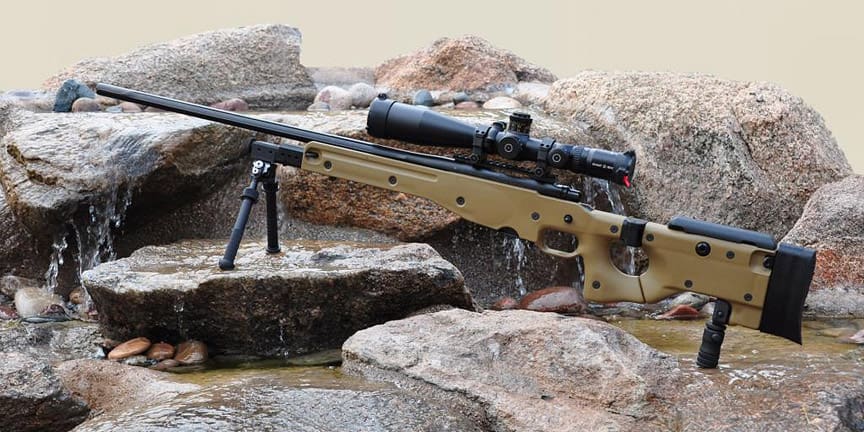


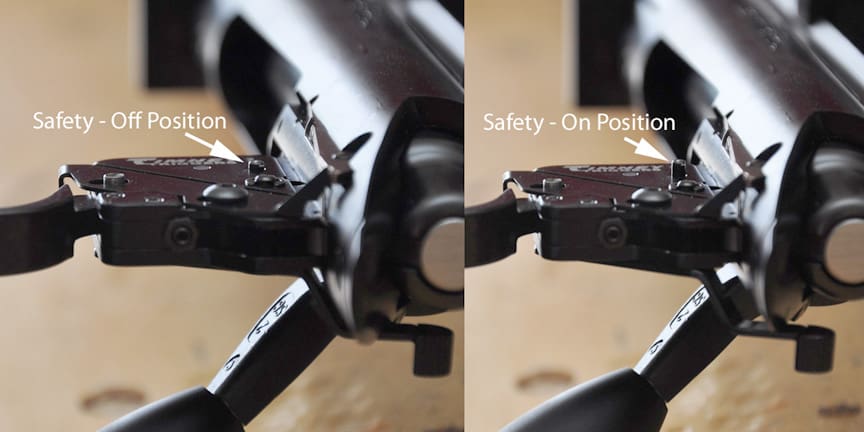
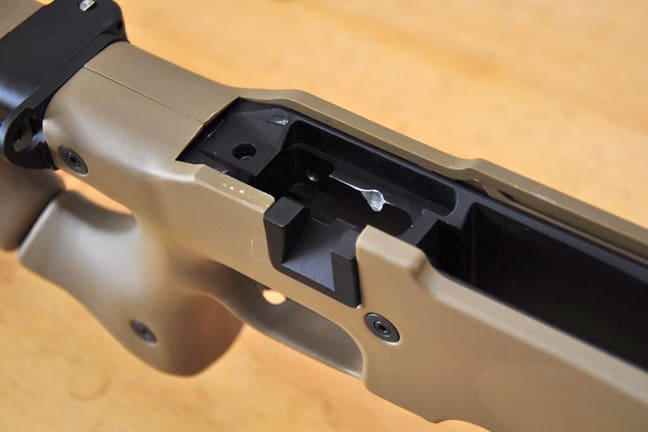

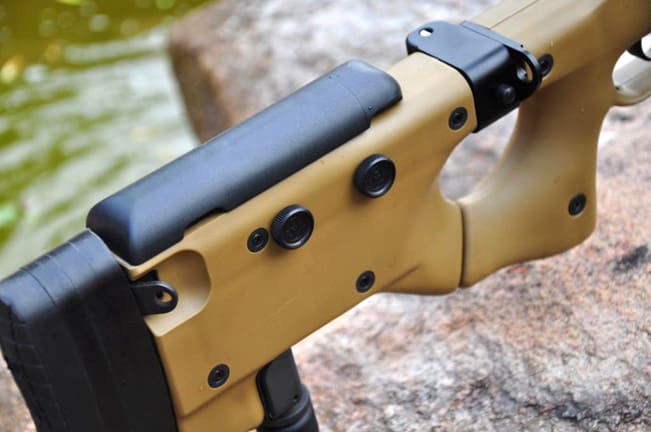

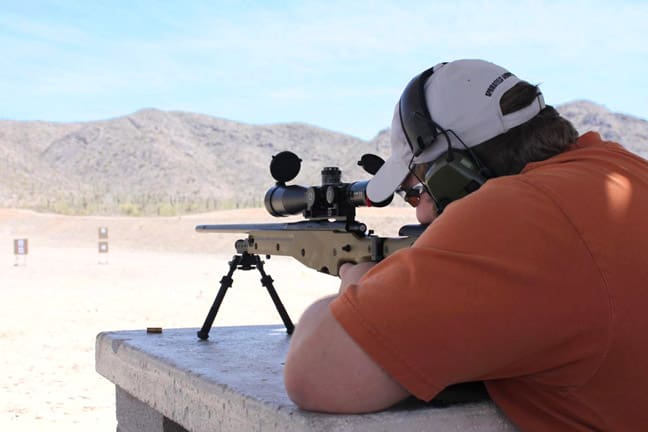
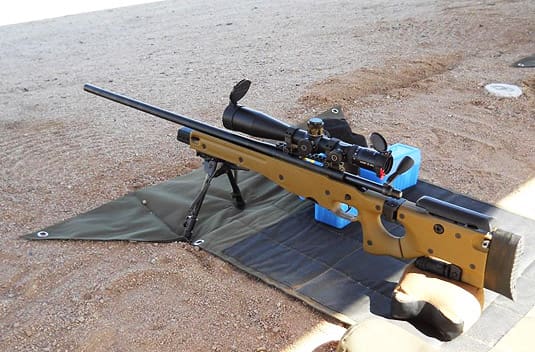
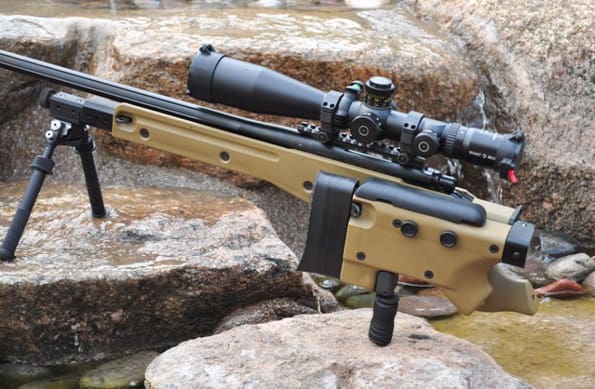
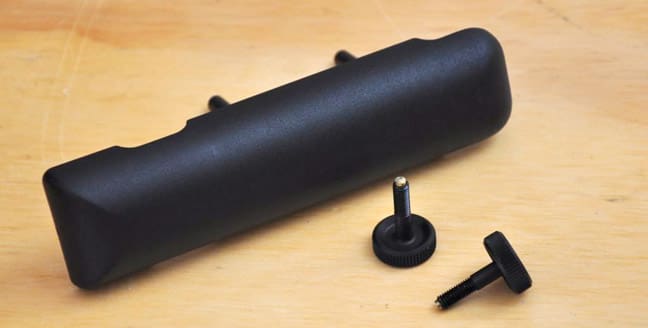



Excellent article, Patrick. I have been looking at tactical stocks for a Remington 700 XCR .300 Win Mag. I think you really covered the bases on this AICS stock. Your opinion on B&C’s is interesting. I’ve been wanting to like them because of cost but had a bad experience in the past with one. I’ve favored McMillan’s since. I do have one question. Do you know what the LOP as have it arranged now with the spacers on that came with the stock?
@John – great question! The LOP, as it comes from the factory with both butt spacers installed is right around 14″. If you remove the spacers and just use the rubber butt pad, LOP can be taken down to almost 12-3/4″. With the combination of the two 10mm spacers and the additional spacers available from AI, you can get close to a 16″ LOP.
Nice review. If you’re hunting another one, check out Mile High Shooting Accessories. They usually have anything AI related in stock or not too far out.
Any plans for an AX chassis review?
@Sean – I’ve thought about one for my F-Class gun, but if Mile High Shooting wants to send me one for testing, I’d gladly run it through the gauntlet for them ASAP 🙂 I’m probably 6 months out from getting that rifle all put together and I’ll need a few months to work up a load for it.
In the mean time, I thought about testing some “Viper Skins” first. A lot of people rave about the pistol grip (a true pistol grip, not a thumbhole), although I haven’t had a chance to even feel a set yet. They’re fairly affordable, only around $200 and I know they go on sale every now and then.
Also, I have a bunch of bipods to test and I’m looking to order a factory “AI Bipod” to compare it to the three different models I have now. Keep an eye out for that soon…
For those that hate thumbhole stocks, AI also makes the AICS AX with a pistol grip. Pricier though. Or you can add Viperskins to the regular AICS or get an all aluminum chassis like the XLR for around $750. One big advantage of the AICS is you can get one in a few days from many vendors, instead of it being a special order from many of the smaller manufacturers.
On weight:
If the rifle is almost 16.5lbs with the skinny, short barrel, you might have a weight issue if you put on a heavier contour 30″ or 32″ barrel for F-Class (assuming you want to be competitive at 1000yds; at 600yd it’s not necessary).
On the S&B scope:
I started shooting F-Open with a .260 topped with a Premier Heritage 5-25×56 scope, with the Gen II XR reticle. I don’t know what reticle/knobs you have on your Schmidt, but I found the Premier’s FFP reticle too thick at maximum magnification (and that’s where you’ll be) for F-class, and the 0.1 mil clicks on the knobs too coarse. I ended up trading the Premier plus some cash for two Nightforce BR 12-with the NP2-DD reticle, which when combined with the 1/8 moa clicks on those scopes, works much better for F-class.
On your .260 for F-Open:
If you are going with a custom .260, you might as well go with .260 AI, you can get a 140gr up to near 6.5×284 velocities, i.e. 2950fps. Or if you’re staying at 600yds and under, 6.5x47L which will get you as fast with a lot less powder, and I’ve found that round to be nearly as inherently accurate as 6mm BR, but with bullets with better ballistics available.
I won’t be using this gun for F-Open – I have a Surgeon 591 SS action and am waiting on a Shilen barrel for it (on order). This rifle currently does have a #5 contour barrel that is 26″ long in case you were wondering.
The S&B is the 4-16×50 PM II/LP, 1/4-MOA turrets, with the P4L “fine” reticle. At 600 yards it hasn’t given me any issues with reticle size or turret adjustments. I haven’t yet made it out to the 1000-yard competitions with it though (fall is coming soon – thankfully!). My F-Open gun will be sporting an unknown optic at this point, but I’ll be looking at the Nightforce Benchrest series.
I haven’t seen enough about the 260 AI to totally convince me yet, but I’m thinking about it. In theory, a 5% increase in case capacity should give approximately a 1.25% increase in velocity, although I know a lot of the 260AI guys are screaming past that figure. I’ve seen guys shoot the 139-grain SMK at a tooth’s-hair under 3000 FPS! The only question, is it worth it? Even the standard 260 Rem is still screaming at 1500 FPS @ 1000 yards. That’s a lot of extra powder, time, recoil, and barrel wear for a 100 fps gain with the AI.
Choices, choices 🙂
I know you won’t be using the gun for F-Open, but if you rebarrel it for 1000yd F-TR you might be hitting the weight limit of F-TR (10kg/18.25lbs).
Some more to think about w.r.t. 1000yd shooting — it’s not the velocity but the wind drift (with a 10mph crosswind) that you look for, and it can make a difference between shooting a 10 or a 9 when the wind gusts:
A .260 shooting the following at 2850fps (the fastest I’ve been able to drive a 140gr class bullet without pressure signs) has the following wind drift, with a 10mph cross wind (calculated using JBM Ballistics:
140gr SMK: 85.5″ of wind drift
142gr SMK: 76.3″
139gr Scenar: 75.6″
Berger 140gr HPBT-LR: 66.5″
Berger 140gr Hybrid (great bullet, twice the cost as SMKs): 65.3″
With a .260 AI, driving them at 2950fps:
140gr SMK: 80.9″
142gr SMK: 71.9″
139gr Scenar: 71.4″
140gr HPBT-LR: 62.8
140gr Hybrid: 61.8″
At 1000yrds, you’ll be competing against the 7mms . . . for example, my .284 shooting the 180gr Hybrid at 2860fps (fairly common) has a calculated 58.1″ of wind drift. A .284 Shehane driving the 180gr Hybrid at 2950fps (another common 1000yrd rounds) has 55.3″.
By another way of comparison, my 600yd gun is a 6.5x47L shooting the Berger 130vld at 2970fps. It has a calculated wind drift of 71.6″ at 1000yds, which is better than any other 140gr class non-Berger bullet in a .260 at 2850fps. It uses about 10% less powder than my .260 to reach the same velocity with the same bullet.
Good point about rebarreling! I won’t rebarrel this gun any time soon though, at least not until I shoot it out. Even using this for competition, my guess is that I have a couple of years before that becomes an issue.
Interesting data on the Bergers too – have you noticed any down-side to them (other than cost)? I know that the match director at my range loves them more than his kids (j.k.)! I haven’t worked up a load with them yet since I think the gun is currently outshooting me and since I’m only at the 600-yard line. At my first F-TR match, I shot a 540-12x and had a hell of a time dealing with the guy next to me. They normally don’t allow muzzle brakes, but since this wasn’t a “NRA event” they allowed him to shoot. Of course, he was put right next to me! I’ve since shot better and better each time I go, although I’ve been mostly experimenting with bipods, rear bags, etc to see what I prefer the most. It is hard to get any prone practice at this range since you can’t shoot from prone unless it’s during a match.
That’s pretty much the only downside, and it is a significant downside. The 6.5mms are cheaper than the 7mms, but still not cheap at around $35 a box.
I also find them to be very consistent… for my .284 I bought 25 boxes of the same lot of 180gr Hybrids, enough to last the barrel (and then some, I’m probably optimistic on barrel life), and they’ve all measured the same when I open a new box.
The Hybrids are also tolerant of seating depth, as advertised… once I found the right COAL (corresponding to 0.030″ jump at the time), I’ve just kept it, even if the throat has moved some, and accuracy has stayed the same.
Another company, B&T Industries, offers an Atlas bipod and an AICS adapter.
You should have pointed out that those things have a very long wait list. It took me about 6 months to get my Atlas 8.0. For 3 months Botach couldn’t get me one, so I canceled and placed my order direct with B&T, who last time I checked didnt accept civilian orders anymore.
I originally tried to use 3/16” Allen bit inside a 3/16” socket with a ¼” extension but it was too large to fit through the hole in the polymer panel.
They do make hex bit sockets, so you dont have to butcher your Allen keys.
http://www.sears.com/gearwrench-3-8inch-drive-long-ball-end-hex-bit/p-00992305000P?prdNo=17&blockNo=42&blockType=G42
@matt – The Atlas does have a long wait period b/c as you said, B&T doesn’t accept orders from civilians anymore. I got mine from Botach after a 2 month wait. However, since this wasn’t an Atlas review, I didn’t bother to mention much more about it, other than “it’s available”.
I did have a set of Allen sockets, around 2″ long, that are to be used with a 3/8″ ratchet. However, the only store than had an SAE set near me was Lowes and they wanted $40+ for a set of 5 sockets. I didn’t want to buy the set, since in my near 30 years on this earth and 15 years of tinkering with cars, motorcycles, electronics, and firearms, I haven’t had the need for set of 4″ Allen bits (up until this point) 🙂 My method was free since I found that extra Allen wrench in my pile of “misc Allen’s”.
Actually the AI AWP was made famous in the Counter Strike series as it was pretty much a one hit kill, 3 at the most if someone has full health and armor. People who were good at no-scoping and quick-scoping would wreck havoc.
Actually the AI AWP was made famous in the Counter Strike series as it was pretty much a one hit kill, 3 at the most if someone has full health and armor and if the user sucked. People who were good at no-scoping and quick-scoping would wreck havoc.
Actually the AI AWP was made famous in the Counter Strike series as it was pretty much a one hit kill, 3 at the most if someone has full health and armor and if the user sucked. People who were good at no-scoping and quick-scoping would wreck havoc.
Yep, Counter-Strike did it almost a decade before Call of Duty 4, the first “Modern Warfare” game in that series, was launched.
It was mislabeled as the AWP in-game, it was actually an AWSM (.338 Lapua Magnum) and would instakill with anything other than a leg shot. (It was originally the .308 AWP but they needed to explain the difference in power between it and the Steyr Scout).
Looks like we have some old school FPS gamers here! Good point about Counter-Strike, although I think the Call of Duty series is MUCH more popular than CS ever was. I too hated those folks who could “no scope” shoot (I was a CV fan), not to mention all the hacks/hackers as well…
I took a quick look at Wikipedia and as of Aug 2011, CS has sold some 27+ million units. Sounds impressive, and it is, but when you realize that COD4 itself has sold 13+ million copies in less than 2 years, it doesn’t sound as amazing. This figure doesn’t include successive COD games, each one having outsold the previous by significant margins. CS may have been the original (note that I never said otherwise), but COD made Accuracy International cool(er) 🙂
Very good review but I noticed you said you wanted to get on for the .260 Remington you have and I know it only comes by .308, .300WM, and .338. I own a Remington 700 SPS in 30-06 and was wondering if I could get the .300WM and get somebody to fit the round to the mag I’ve heard of people doing it but I’m only 18 and don’t know how to personally.
Aaron, the 260 Remington, otherwise known as the 6.5-08 A-Square, will fit in any short-action stock. As the name suggests, the 260 Rem is nothing more than a 308 Win (the “-08”), necked down to 6.5mm.
Your 30-06 is a long-action and should work well with the long-action stock. To my knowledge, the AICS magazines work with the 270, 30-06, 6.5-284, and 7mm.
The 30-06 fits in the .300 WM chassis just fine, but you will have to bend the top of the magazine slightly inwards (just the round catch) otherwise the rounds will pop out of the magazine.
So PC, do you believe I could get the 300 WM magazine for the AICS and it would reliably feed each round?
I visited several web pages however the audio feature for audio songs current at this site is truly fabulous.
Patrick,
I notice that you have the scope mounted from a Picatinny rail. I am curious to know what rings you used and how high above the bore it places the centerline of the scope
california pharmacy impotence erectile dysfunction medications
When I drop in my Remington 700 action and screw it in the trigger area is open. I don’t know how else to describe it, but I was wondering is there a piece that I am missing so it won’t be so open and prone to getting dirt and dust in there?